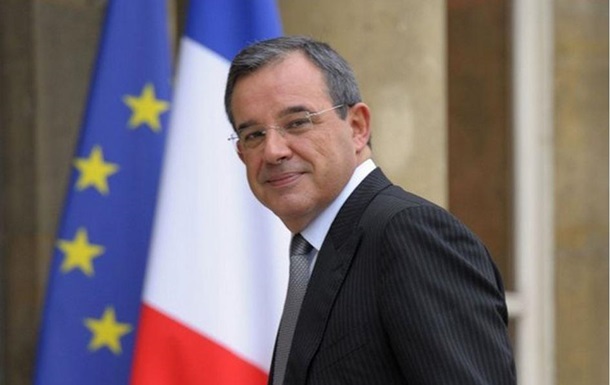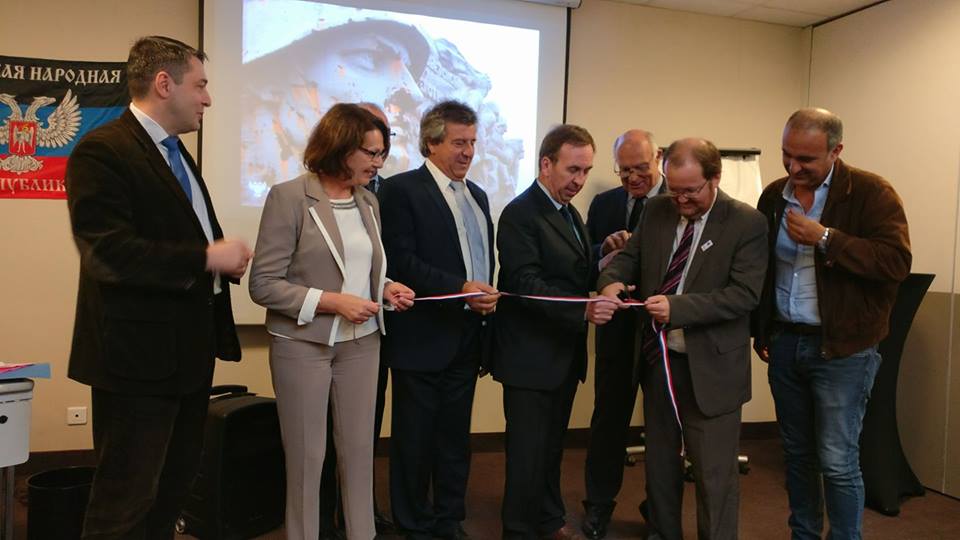All of them have been working in Ukraine, gaining first-hand familiarity with the events that have been taking place there since the beginning of the “Maidan Revolution” until the present time.
"We are reporters working regularly in Ukraine. Some of us are permanent correspondents in Kyiv and in the wider region. Others are regular special correspondents. Using print media, radio, television and photography, we have been on the ground covering the Maidan Revolution, the annexation of Crimea and the war in Donbas.
We concurrently focus dozens of pairs of eyes and ears on these events, bringing to bear our notebooks, pens, and cameras. Many of us are Russian-speaking, others are both Russian and Ukrainian speakers. But without distinction we are journalists first and foremost.
Read also: Homophobic Stalinist reiterates Russian propaganda for French documentary
On Monday, February 1st, we were shocked to view the documentary by Paul Moreira entitled “Ukraine - the Masks of Revolution,” broadcast by Canal+, in its Special Investigation series—although it was not the thesis of the film that disturbed us. We as a group regularly cover extreme-right groups in Ukraine. We have reported that the war has made them more virulent, heavily armed, and that it constitutes a danger to the future of the country.
No. What profoundly disturbed us in this film is its lack of perspective on the complex issues rooted in the depths of Russian-Ukrainian relations. The confusion that results is exacerbated by a number of factual errors, by conflicting information, and also by shortcuts and a manipulation of actual events.
We cannot remain silent over undated images from YouTube, taken of torchlight marches of neo-Nazis occurring subsequent to the Maïdan protests, being inserted into video depictions of actual events. Or of mischaracterizations of the partisan affiliations of key figures in the demonstrations.
The confusion that results is exacerbated by a number of factual errors, by conflicting information, and also by shortcuts and a manipulation of actual events.
We also deplore the documentary’s inappropriate treatment of the linguistic questions that have been faced in Ukraine. These questions have certainly proven to be delicate ones on a number of occasions. But Ukraine is one of the most bilingual countries in Europe. Through an apparent lack of knowledge, Mr. Moreira makes a dramatic exaggeration when he refers to 'Russians' or 'Ukrainians of Russian origin' as the inhabitants of a country where national identity is not defined solely by ethnic-linguistic affiliation, at least not in 2016.
How can we take seriously the controversy over the use of the Ukrainian or Russian languages when representatives of Ukrainian nationalist movements answer Mr. Moreira’s questions in the language of Pushkin? Most Ukrainians speak both Ukrainian and Russian. And, since 2004, the historic east/west division of the country no longer serves to divide Ukrainian and Russian speakers. In fact, Mr. Moreira is replicating a phenomenon he himself denounced in an interview published in l'Humanite: namely writing history 'in black and white’ terms.
We are also left aghast at Mr. Moreira’s presentation of the annexation of Crimea. He simply asserts that, ‘After the revolution, the Crimean population voted their loyalty to Russia by referendum in great numbers.’ In so stating, Mr. Moreira inexplicably failed to present the dubious context in which the referendum was conducted, including any reference to the extremely short notice on which the vote was held, as well as the deployment in Crimea of Russian military forces during the time the referendum was conducted.
The most notable legerdemain of this film is to portray the extremist Ukrainian paramilitary groups as the prime mover of the Ukrainian revolution. These were mostly small, self-drafted groups of citizens. Their numbers increased and their presence expanded significantly after the Maidan Revolution, in reaction to the Russian invasion of Crimea and the separatist uprising in the east of the country.
Most of the phenomena described by Mr. Moreira are a result of the war in Donbas, a hybrid war which has caused 10.000 deaths since April, 2014. However, this conflict is only mentioned in passing. This is a major fault of the film. The Ukrainian volunteer battalions, extremely diverse sociologically, were indeed composed in part of radical nationalist elements. That is no secret. Heterogeneous, complex to analyze, these groups mirror a Ukrainian society confronted with war.
In his documentary, Mr. Moreira ignores the fact that all of these events were reported on, studied, and documented by the media in France as well as the rest of the international press.
Many people worry about the lack of State control over these groups. This problem has been identified by several reports from ONG international and by numerous reports in the French press. Although the film expresses interest in these groups, Mr. Moreira never mentions the efforts of the Ukrainian government, especially during 2015, to disarm them or to subsume them into government forces.
Contrary to Mr. Moreira’s assertions, we, as journalists deployed in Ukraine, dealt with these issues in our coverage of events there. We realized that these are not phenomena that can be seized by the horns, or that can be manipulated by Ukrainian authorities. But, based on the facts, we wholeheartedly reject the notion that power over Ukrainian affairs was seized in February of 2014 by paramilitary groups controlled by the extreme right.
Perhaps the most important segment of this film is the one dedicated to that terrible day on May 2 2014, when bloody clashes arose in Odesa between pro-Ukrainian and pro-Russian demonstrators, and which resulted in the dreadful death, by fire, of 42 victims, most of whom were pro-Russian. After almost two years, the Ukrainian judicial system has still not uncovered the truth surrounding this tragedy. And, contrary to Mr. Moreira’s narration, this is not the only drama over the last two years that has not yet been clarified by Ukrainian officials.
In his documentary, Mr. Moreira ignores the fact that all of these events were reported on, studied, and documented by the media in France as well as the rest of the international press. For example, over the past two years, we ourselves have been studying the transformation of this major and misunderstood European country. And, at the same time, we should acknowledge that an active war has, during this time frame, been conducted between two countries
Many of us journalists feel that this documentary undermines, and even slanders, our vocation. Normally we appreciate productions of the Premières Lignes for their serious treatment of issues that are important to society. That's why it was so surprising to see the irresponsible, and even dangerous, intellectual laziness exhibited by this film.”
Signatures :
Ksenia Bolchakova
Yves Bourdillon
Gulliver Cragg
Marc Crepin
Régis Genté
Laurent Geslin
Sébastien Gobert
Paul Gogo
Emmanuel Grynszpan
Capucine Granier-Deferre
Alain Guillemoles
James Keogh
Céline Lussato
Elise Menand
Stéphane Siohan
Olivier Tallès
Elena Volochine
Rafael Yaghobzadeh




